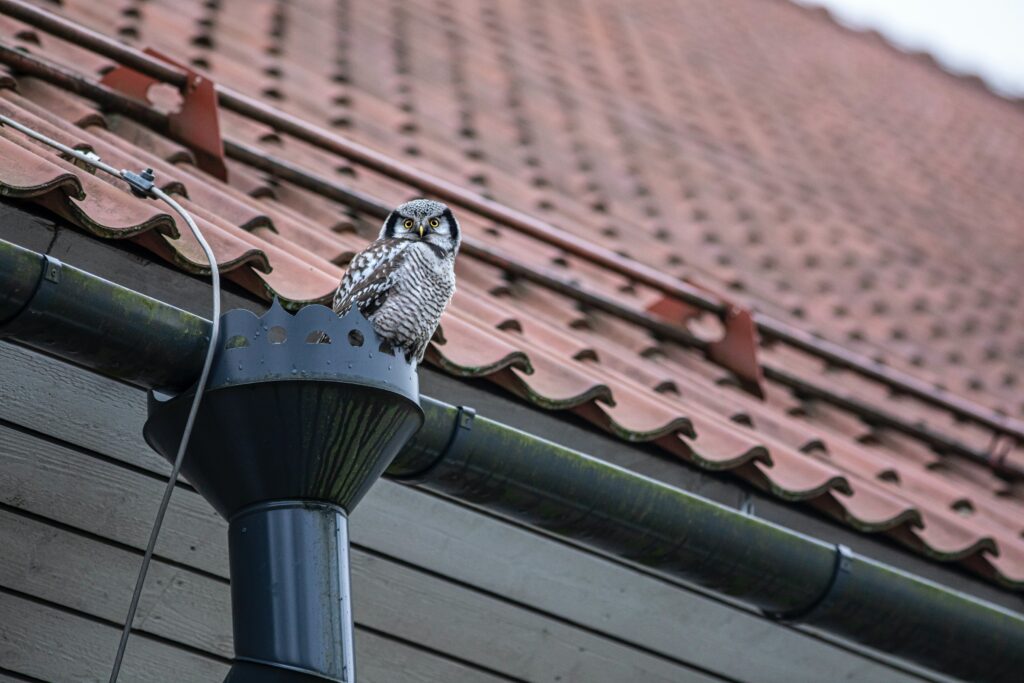Have you started seeing the soil beginning to erode? Or maybe you’re getting water in your basement and can’t find the source. You’ve inspected and checked your home’s gutter system and everything seems to be in working order.
So what is it?
Gutters that protect your home from water damage are basically useless without properly-installed downspouts to channel that water away from the base of your home’s foundation.

What is a Downspout?
A downspout is part of the gutter system of your home that is installed vertically to catch all the rainfall from the gutter basins and divert it from your home. It is connected to the gutter outlet at the top and does its work to control the water direction.
Parts of a Downspout
There are a few key parts for a safe installation. This sequences is necessary to ensure the lifespan of the downspout, and ensure it functions the way it was designed. From the top of the downspout, a drop outlet connects the gutter to the downspout. You’ll need it sealed to ensure it’s waterproof too.
Underneath the drop outlet is a downspout elbow that curves from the gutter toward the house. That is connected to the downspout. The downspout piece is a long tube-like piece that is secured to the house with a downspout strap. There’s also another elbow placed at the bottom to channel the water away.
An extension piece is commonly used to reach that 4-foot minimum distance from the house to the water exit point. Some might have a splash block or a plastic extension too. A 10-foot distance is preferred to ensure the water does not seep into your home’s foundation and basement.
Downspout Requirements
There are a few mandatory requirements when installing downspouts that every homeowner must take into account. Be sure to check your state or city’s code regarding gutter requirements if you’re unsure.
- There must be a downspout every 35-40 feet of gutters
- Extensions may be used to reach that 10-foot preferred distance to empty water safely from the home
- Downspouts must be installed and positioned so they do not cause damage to any adjacent properties
- The water discharge height at the bottom of the downspout must not be higher than 23 inches
- If draining in the front of the house, downspouts should be connected to the existing city drainage system or a storm sewer to avoid the accumulation of ice and causing injury to passersby
Where to Install Downspouts
As previously mentioned, there should be one downspout for every 35-40 feet of gutters but if your house is on the smaller side, there should be a minimum of 4 downspouts installed – one on every end and side of your home. Commonly, downspouts are installed at the corners of the house.
However, take into consideration the makeup of your property. If your downspouts drain into your flowerbeds, it could push your mulch or rock away and over-water your plants. Most downspouts are installed on the sides of the house for visual-appeal purposes.
For two-story (or more) homes, gutter downspouts must also be installed on the additional levels. For example, attached to the second-floor gutters, a downspout should drain into the downspout area for the first-floor downspout system. Be sure that your downspout size is adequate enough to carry the water without spilling from multiple floors of the home.
DIY or Call in the Gutter Pros
With only a few pieces to a downspout, many homeowners attempt to install gutters themselves. Alternatively, others trust the job to professional gutter installation specialists. These are individuals who are fully trained and insured – just in case something were to go wrong.
Safety is always a concern when DIYing a project – since homeowners don’t often perform that specific downspout installation every day. The process may take longer, use the wrong tools, or not be well-versed in the precautions taken at varying heights.
Professional installation costs more, obviously, but gutters and downspouts must be well-functioning to reduce the risk of extreme water damage, dry rot, decay, home staining, mold, mildew, and even cracking/chipping of your foundation.
Only you can decide if you’re knowledgeable and equipped to handle the job yourself.
Final Thoughts
Whether you decide to take on the installation of downspouts yourself or you make the choice to hire out the job, downspouts play a major role in keeping your home safe and should be installed properly.